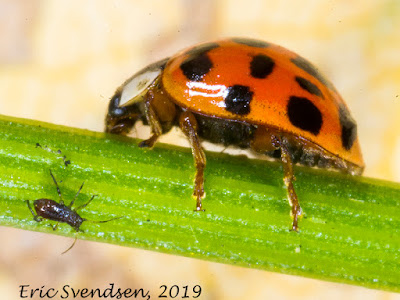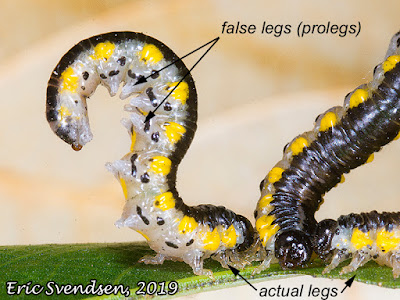Two-striped grasshopper.
 |
| Two-striped grasshopper on common tansy. |
The problem with insects is that there is an unbelievable variety of them. They are grouped into a total of 31 orders; each order is made of insects of a similar nature. Butterflies and moths belong to the Lepidoptera. Grasshoppers and crickets belong to the Orthoptera. If you want to look at a complete list of insect orders, click here.
The first chore is to figure out the order an insect belongs to. This is important because it streamlines the search for the investigation. There is no sense in looking for a beetle (Coleoptera) in a true bug (Hemiptera) category; it just won't be found. Fortunately, it is not very difficult to get identification dow to at least order level. The next part is much trickier.
Since there are so many insect species (over 1 million species of beetle alone), most of my guides are regionally based. As I live and travel in the Pacific North-west most of the time, this is the area the books deal in. Some species, like the two-striped grasshopper above, reside across the entire continent. Other species are much more localized and not found outside of a specific region. When I travel outside the zone my search becomes that much more complicated.
Another place I can extract information is the internet. There are some excellent websites filled with up-to-date facts on what it is I am looking for. A good example of this is the website Bugguide. It has a pictorial collection of icons to get you started and fantastic information on a wide range of species. I also love the fact that new photos are added regularly, which really helps in identification. For example, the two-striped grasshopper's info-sheet is found here.
I always enjoy learning about a new species. The benefit of knowing an insect's specific name is the ability to understand it and its relationship to the environment. The funny thing is that it seems the more I learn, the less I know. I suppose that is true in any field of inquiry.
Thanks for reading. www.ericspix.com



Comments
Post a Comment